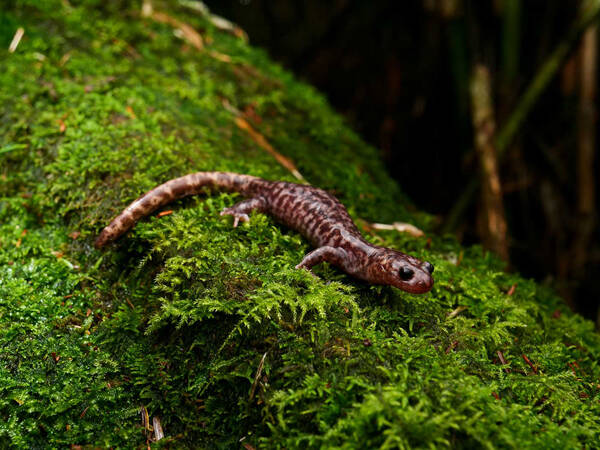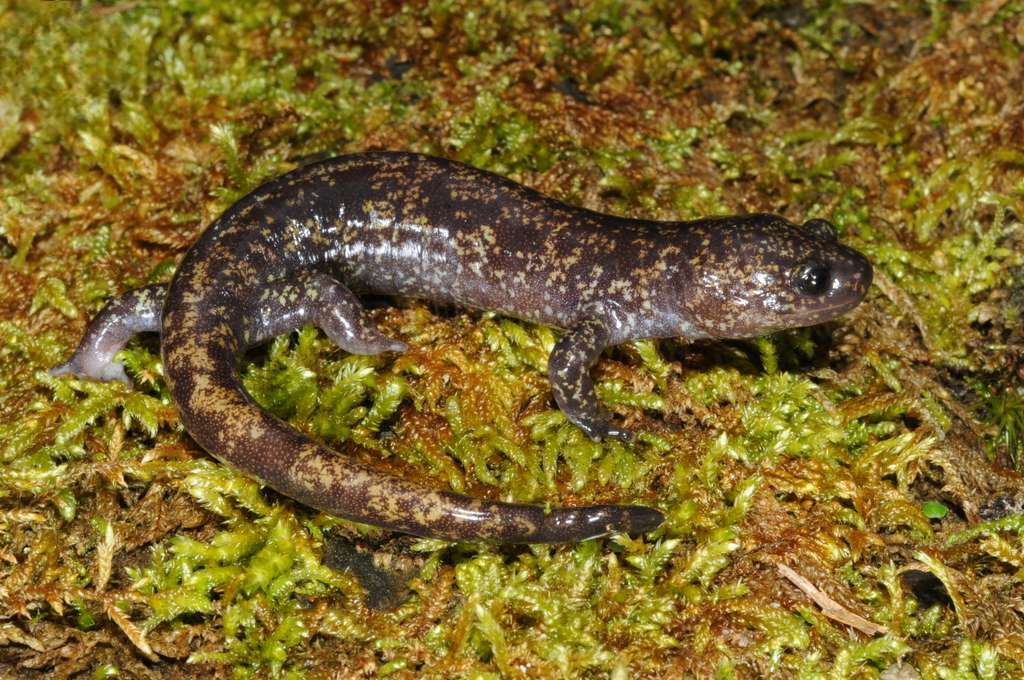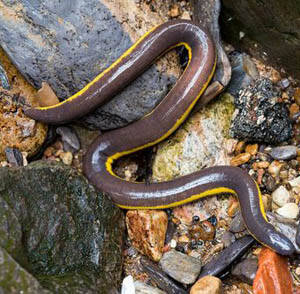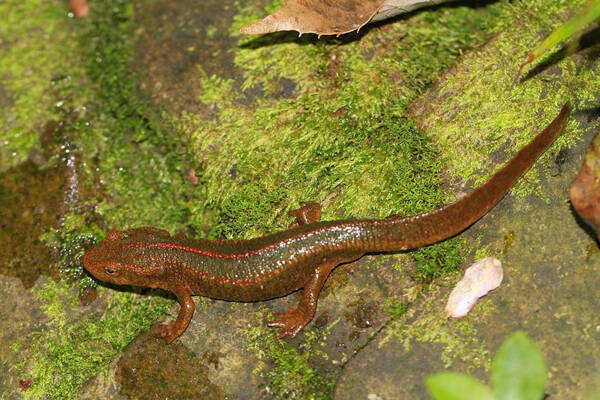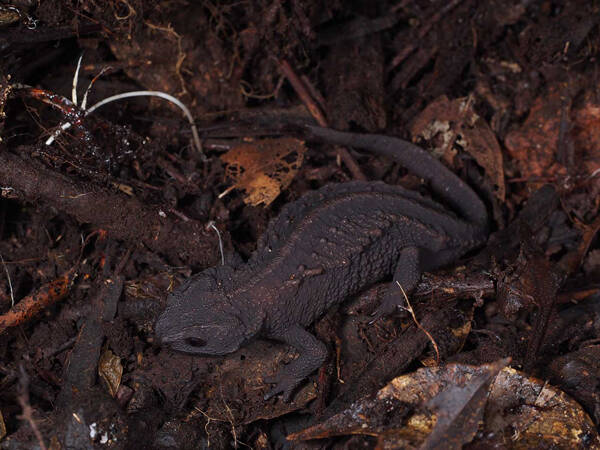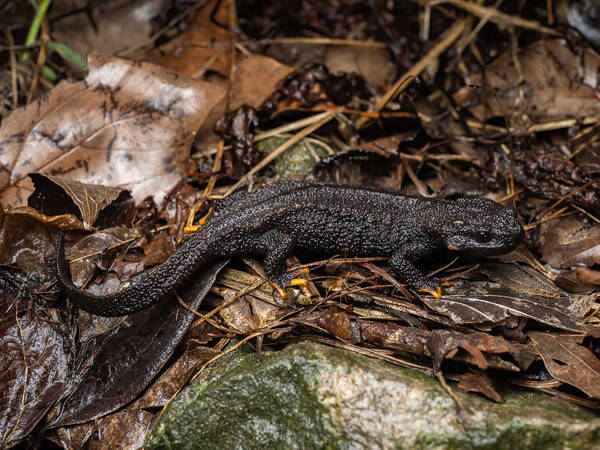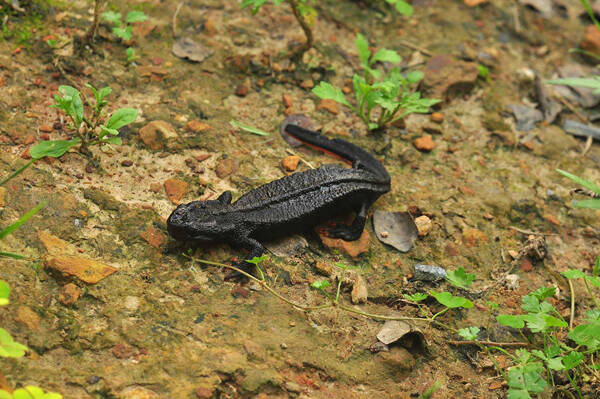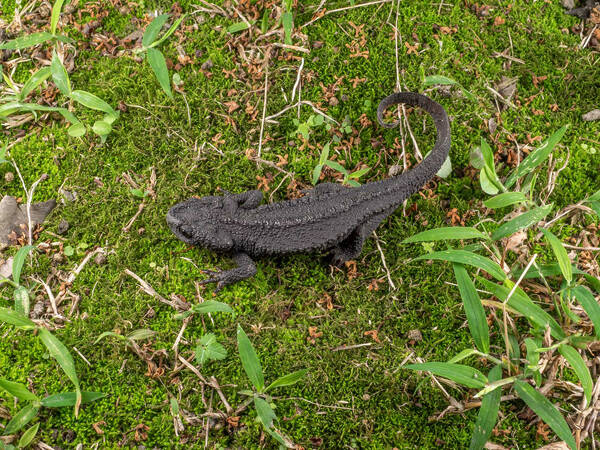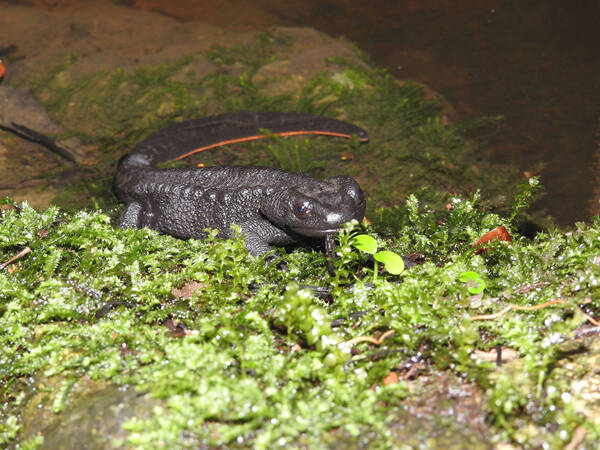Hynobius sonani
IUCN
LCBasic Information
Scientific classification
- name:Hynobius sonani
- Scientific Name:Hynobius sonani,Chunan's Salamander
- Outline:Urodela
- Family:Caudata Hynobiidae
Vital signs
- length:90-129mm
- Weight:
- lifetime:
Feature
The base color of the back is light brown, yellowish brown or pinkish brown, with irregular dark brown spots scattered on it, and dense spots in the middle of the body.
Distribution and Habitat
Endemic to China, distributed in Nantou, Taiwan (Nenggao Mountain, Hehuan Mountain, Yushan Mountain).
Adult salamanders live in mountainous areas at an altitude of 2600-3300m.
Appearance
The head is oval; the snout is rounded, without lip folds; there is no fontanelle, the vomerine tooth row is V-shaped, the inner branch is very long, and the ends of the left and right branches are very close. The ventral surface of the head is smooth, and the neck folds are obvious. The limbs are short and strong, the back is light brown, yellowish brown or reddish brown, with irregular dark brown spots; the abdomen is lighter, the throat is yellowish brown, and there are dark brown spots.
Details
Chunan Hynobius is a tailed amphibian belonging to the Hynobiidae family and the genus Hynobius. It lives in high and cold mountainous areas at an altitude of 2750 to 3500 meters. It often lives under stones in dense forests and overgrown weeds or under stones beside mountain streams. Its habitat is neither dry nor too humid.
Kakegawa et al. (1989) reported that a female salamander with a head and body length of 58 mm was collected at an altitude of 2750m near the origin of the type specimen of this species (Songyuan, Jenai, Nantou) on July 29, 1984; a male salamander with a head and body length of 66.7 mm was obtained on January 9, 1985. After artificial induction of spawning in indoor breeding, the female salamander laid eggs indoors on January 17. The egg sac was transparent and tough with fine stripes; the eggs were yellow-white with a slight green tint, and the green color disappeared during development. The egg bag is 160 mm long, each containing 16 eggs with a diameter of 5 mm. The water temperature is 7-9℃, and the eggs hatch on April 18, which takes 91 days. The newly hatched larvae have no balancing branches, are 13.3 mm long from snout to anus, and have a tail length of about 10.8 mm. They have large yolk sacs; the external gills and forelimb and hindlimb buds are very small, and they live on the bottom of the water. After the limbs develop, they often hide under stones or gravel. It is speculated that the salamander lays eggs as early as November and continues to lay eggs until mid-January.
Listed in the second level of the "List of National Key Protected Wildlife in China".
